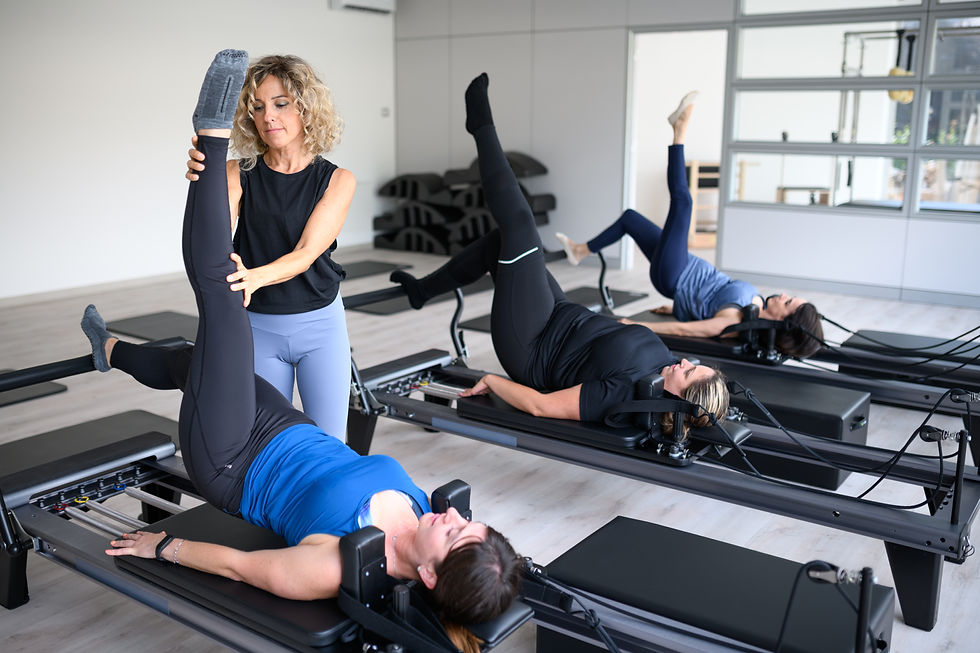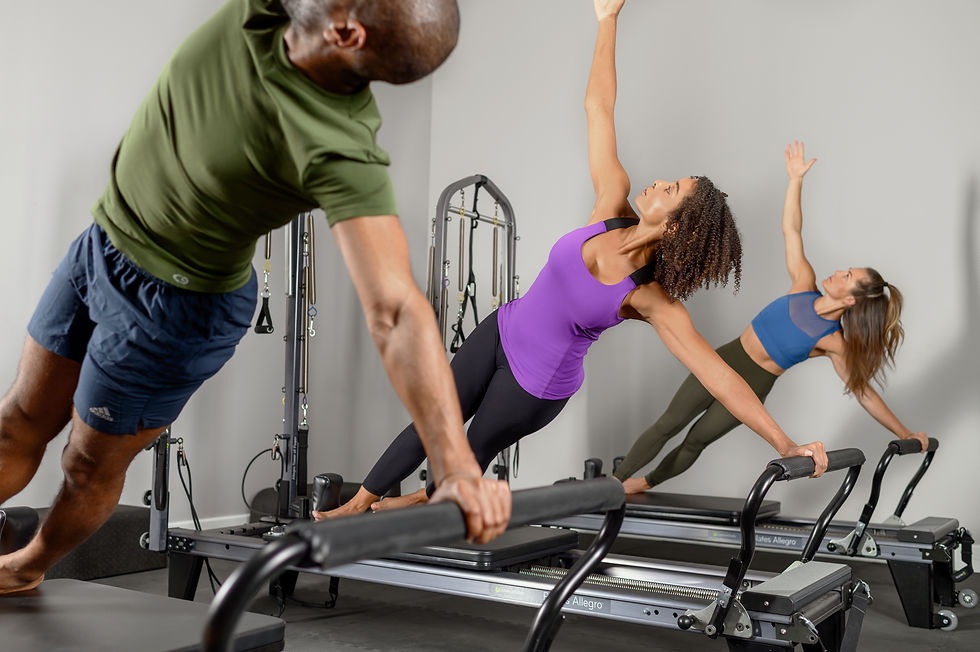What Makes a Great Pilates Teacher? (Hint: It's Not Perfect Technique)
- Jeanine Yutani

- Mar 19
- 3 min read
If you ask a new instructor what makes a great Pilates teacher, they might say something about impeccable form, a deep understanding of anatomy, or the ability to execute every exercise flawlessly. But if you ask seasoned instructors—or more importantly, the clients who keep coming back—the answer sounds very different.
Because here’s the thing: Great teaching isn’t about showing off textbook-perfect movement. It’s about creating an experience where your client learns, feels, and grows. And that comes down to something far more important than perfection: deep listening, adaptability, and the ability to apply movement principles to real bodies, not just the ones in a manual.

The Art of Deep Listening
A great Pilates instructor doesn’t just hear what a client says; they listen to what’s not being said. When a client walks into the studio and says, “I just feel off today,” or struggles through an exercise that was easy last week, their body is giving you a wealth of information. The best teachers don’t bulldoze through a planned sequence—they respond.
Deep listening means:
Observing how a client moves and what their movement reveals.
Noticing subtle hesitations, shifts in breathing, or moments of frustration.
Asking better questions: “What do you notice?” instead of “Does that feel okay?”
Trusting that the body speaks volumes, even when words don’t.
Adaptability: The Best Plan is the One You Can Change
Rigid teaching—where instructors stick to a set sequence no matter what—is the fastest way to lose connection with a client. Real people don’t show up as predictable patterns of movement. They come in tired, stiff, sore, distracted, or excited to challenge themselves in unexpected ways. A great instructor meets them where they are, not where the lesson plan thought they’d be.
Adaptability means:
Knowing when to shift gears instead of forcing a planned sequence.
Recognizing that what worked yesterday might not work today.
Understanding how to progress, regress, modify, or provide variations as needed.
Giving permission for movement to look different from the “ideal” version.
Understanding that progress is not linear—and that’s okay.
Applying the Work to the Body in Front of You
Memorizing exercises from a manual is a starting point, not the destination. Great teachers understand the why behind each movement and know how to make it relevant to the person in front of them. The manual gives us a framework, but real teaching happens when we apply those principles to real, living, breathing bodies—not a theoretical “ideal” version of movement.
This means:
Recognizing that every client has different movement histories, strengths, and limitations.
Knowing when and how to adjust an exercise to fit the person in front of you.
Using clear, precise cueing that helps clients connect to the movement—not just copy it.
Helping clients build awareness and confidence in their own bodies, rather than chasing an arbitrary “perfect” shape.
The Best Teachers Are Always Learning
If there’s one thing great Pilates instructors understand, it’s that teaching is a practice—just like Pilates itself. The best teachers aren’t the ones who know everything; they’re the ones who are still curious, still evolving, and still learning from their clients every single day.
Perfect technique might look impressive, but deep listening, adaptability, and knowing how to apply the repertoire to the bodies you work with every day? That’s what keeps clients coming back.



Comments